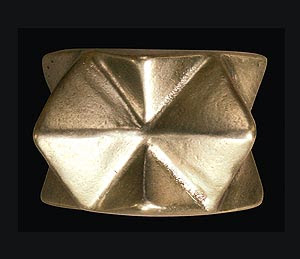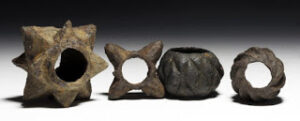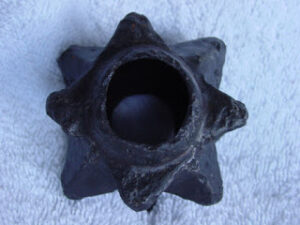Last night I was watching a cheesy movie. A military unit had gone into a city full of zombiods. The enemy were aggressive and cannibalistic but they were not undead and did not require a shot to the head. In an early scene the soldiers have run out of ammo and are fighting off the waves of attacks with hand-held M9 bayonets. What struck me was this. If you are going up against a whole city filled with potential enemies it is inevitable that you cannot carry enough ammunition. Knowing this, would you not attempt to carry better close combat weapons than bayonets you cannot fit on your SMGs? If you are in a city then at least one crowbar is a useful thing for a unit to have. Later the character acquires a tomahawk.

Thinking on this brought me around to the topic of trench clubs. I had meant to post this image a while back but it seems I never got around to it. It is tempting to think of soldiers sitting in the trenches whiling away the time making their own clubs. Doubtless some weapons were made in exactly this fashion. However, some weapons were actually produced more systematically by regimental carpenters. The example shown in this image is sometimes referred to as a “Knobkerrie” and was designed and produced by the Royal Engineers of the Second Army. The head is described as being iron and it seems likely that it was actually cast iron. The Victorians favoured cast iron for many uses and I doubt that the Edwardians were any different. Cast iron was certainly used for other models of trench club and it would be a very logical choice in quickly and simply creating club heads. This head resembles a cogwheel and it may be a part of some machine was used for the original mould. What is particularly interesting about this particular head was that it was designed to attach to a standard issue entrenching tool handle (aka "helve"), making a weapon about 16" long.

The head of this trench club reminds me of these geometric maceheads from Southern Russia, in use from the eleventh century onwards. A websearch also turned up these Byzantine mace heads and a number of similar designs. Some are made from bronze so would have been cast. One example even looks like the WW1 Royal Engineers “c” head.








